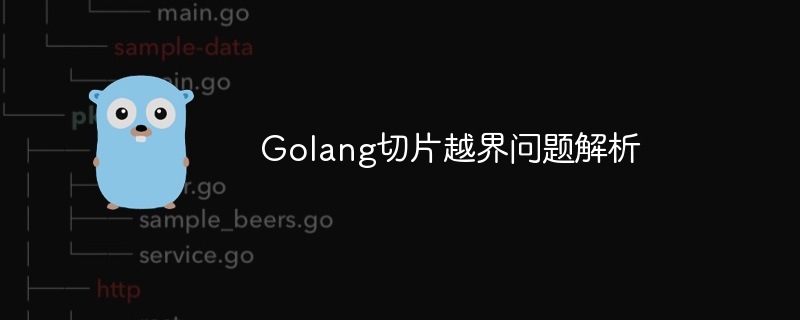
Golang切片越界问题解析
Golang是一门高效、简洁的编程语言,其中的切片(slice)作为一种重要的数据结构,在日常开发中经常被使用。然而,在使用切片的过程中,经常会遇到切片越界问题。本文将详细解析Golang中切片越界问题的原因以及如何避免这类问题,同时提供具体的代码示例进行说明。
在Golang中,切片是对数组的一个引用,它包含三个信息:指向数组的指针、切片的长度和切片的容量。切片可以动态地增加长度,而不用事先声明其大小。切片的基本定义形式如下:
var slice []int // 定义一个初始为空的整型切片
切片可以通过make函数来创建,也可以直接使用切片字面量。例如:
立即学习“go语言免费学习笔记(深入)”;
// 使用make函数创建切片
slice := make([]int, 0, 10) // 创建一个初始长度为0,容量为10的整型切片
// 使用切片字面量创建切片
slice := []int{1, 2, 3, 4, 5} // 创建一个包含5个整数元素的切片切片越界访问是指当访问切片中不存在的索引位置时发生的错误。切片越界访问会导致程序崩溃或产生意料之外的结果。例如,访问一个超出切片长度的索引位置:
package main
import "fmt"
func main() {
slice := []int{1, 2, 3, 4, 5}
fmt.Println(slice[5]) // 尝试访问第6个元素,超出切片长度
}以上代码会导致panic错误,因为访问了不存在的索引位置。为了避免切片越界访问问题,我们可以在访问切片前进行索引范围的检查。例如:
package main
import "fmt"
func main() {
slice := []int{1, 2, 3, 4, 5}
index := 5
if index >= 0 && index < len(slice) {
fmt.Println(slice[index])
} else {
fmt.Println("Index out of range")
}
}通过对索引范围进行检查,我们可以避免发生切片越界访问的问题。
在Golang中,切片在扩容时会生成一个新的数组,并将原数组中的元素复制到新数组中。当切片的长度超过其容量时,切片会进行扩容操作,容量会随之增加。切片的扩容遵循一定的策略,通常是扩容为原容量的两倍。这也是导致切片越界问题的一个原因,因为在扩容时,可能会造成旧的索引已经超出了新切片的长度。例如:
package main
import "fmt"
func main() {
slice := make([]int, 3, 3)
fmt.Println("Slice:", slice)
slice = append(slice, 4)
fmt.Println("Slice after append:", slice)
fmt.Println("Element at index 4:", slice[4]) // 访问超出切片长度的索引
}在以上代码中,我们在一个长度为3、容量为3的切片上进行了append操作,此时会触发切片的扩容,将切片的容量扩展为6。然而,因为原切片的长度为3,索引为4的元素并不存在,访问该索引位置会导致panic错误。
为了避免切片越界问题,我们可以采取以下几种方法:
总之,在使用切片时,务必注意索引的范围,避免出现切片越界访问的问题,保证代码的稳定性和可靠性。
通过上述内容的介绍,相信读者对Golang中切片的越界访问问题有了更深入的理解,并学会了如何避免这类问题。希望本文对您有所帮助,谢谢阅读!
以上就是Golang切片越界问题解析的详细内容,更多请关注php中文网其它相关文章!

每个人都需要一台速度更快、更稳定的 PC。随着时间的推移,垃圾文件、旧注册表数据和不必要的后台进程会占用资源并降低性能。幸运的是,许多工具可以让 Windows 保持平稳运行。

Copyright 2014-2025 https://www.php.cn/ All Rights Reserved | php.cn | 湘ICP备2023035733号